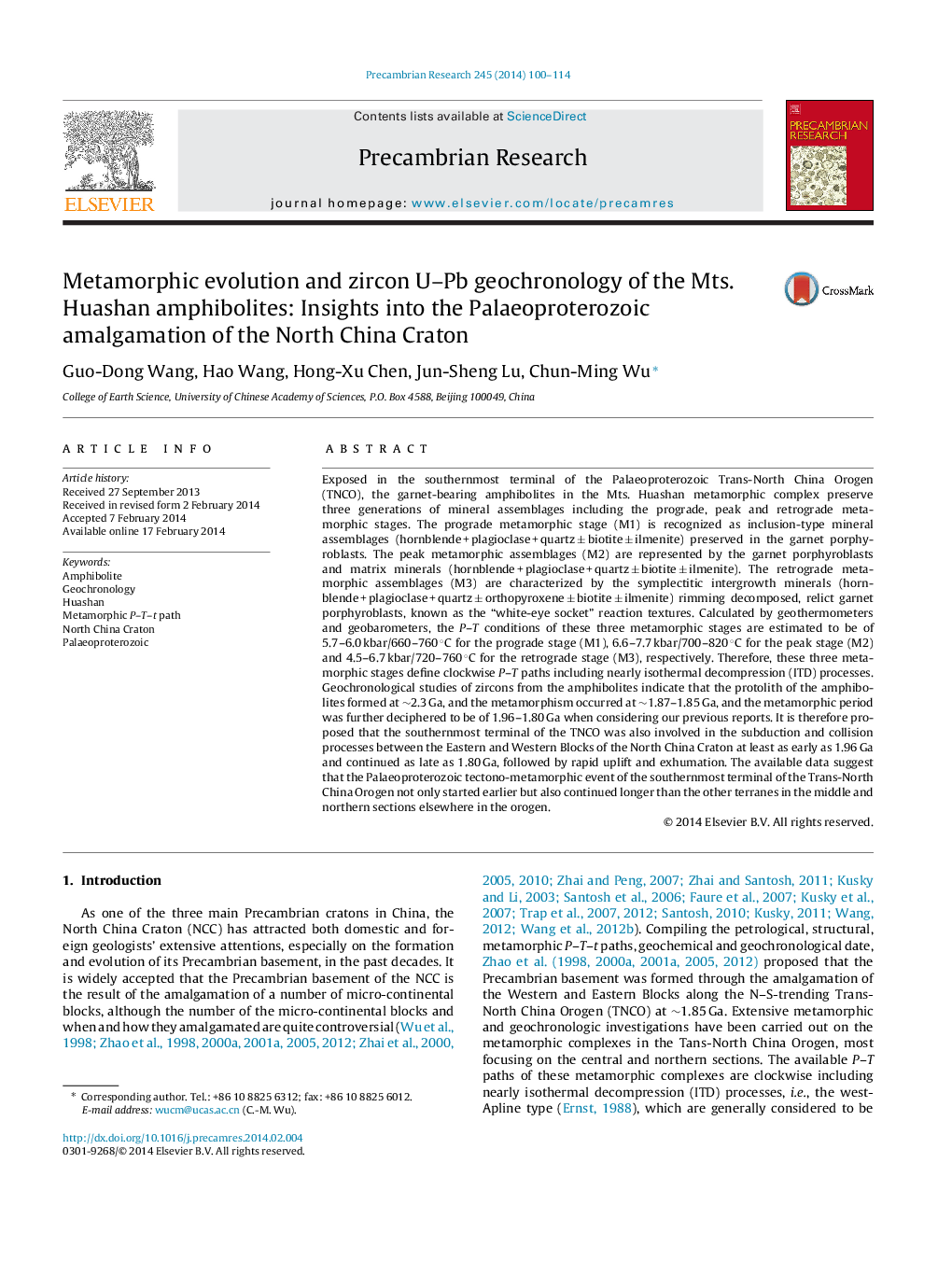| کد مقاله | کد نشریه | سال انتشار | مقاله انگلیسی | نسخه تمام متن |
|---|---|---|---|---|
| 4722966 | 1639629 | 2014 | 15 صفحه PDF | دانلود رایگان |

• Clockwise ITD P–T paths were retrieved from the Mts. Huashan amphibolites.
• U–Pb geochronology of metamorphic zircons demonstrates the metamorphism occurred during ca. 1.96–1.80 Ga.
• Metamorphism of the southernmost Trans-North China Orogen started earlier and lasted longer than other terranes in the TNCO.
Exposed in the southernmost terminal of the Palaeoproterozoic Trans-North China Orogen (TNCO), the garnet-bearing amphibolites in the Mts. Huashan metamorphic complex preserve three generations of mineral assemblages including the prograde, peak and retrograde metamorphic stages. The prograde metamorphic stage (M1) is recognized as inclusion-type mineral assemblages (hornblende + plagioclase + quartz ± biotite ± ilmenite) preserved in the garnet porphyroblasts. The peak metamorphic assemblages (M2) are represented by the garnet porphyroblasts and matrix minerals (hornblende + plagioclase + quartz ± biotite ± ilmenite). The retrograde metamorphic assemblages (M3) are characterized by the symplectitic intergrowth minerals (hornblende + plagioclase + quartz ± orthopyroxene ± biotite ± ilmenite) rimming decomposed, relict garnet porphyroblasts, known as the “white-eye socket” reaction textures. Calculated by geothermometers and geobarometers, the P–T conditions of these three metamorphic stages are estimated to be of 5.7–6.0 kbar/660–760 °C for the prograde stage (M1), 6.6–7.7 kbar/700–820 °C for the peak stage (M2) and 4.5–6.7 kbar/720–760 °C for the retrograde stage (M3), respectively. Therefore, these three metamorphic stages define clockwise P–T paths including nearly isothermal decompression (ITD) processes. Geochronological studies of zircons from the amphibolites indicate that the protolith of the amphibolites formed at ∼2.3 Ga, and the metamorphism occurred at ∼1.87–1.85 Ga, and the metamorphic period was further deciphered to be of 1.96–1.80 Ga when considering our previous reports. It is therefore proposed that the southernmost terminal of the TNCO was also involved in the subduction and collision processes between the Eastern and Western Blocks of the North China Craton at least as early as 1.96 Ga and continued as late as 1.80 Ga, followed by rapid uplift and exhumation. The available data suggest that the Palaeoproterozoic tectono-metamorphic event of the southernmost terminal of the Trans-North China Orogen not only started earlier but also continued longer than the other terranes in the middle and northern sections elsewhere in the orogen.
Journal: Precambrian Research - Volume 245, May 2014, Pages 100–114